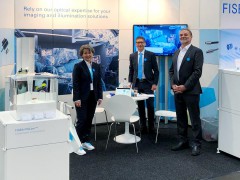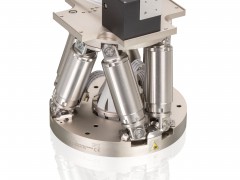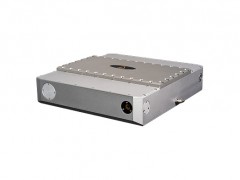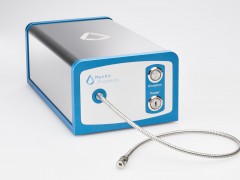
Chinese scientists propose a one-way quantum phonon laser technology solution
source:Laserfair
release:Nick
keywords: quantum laser technology
Time:2019-01-10
In quantum chips, phononic resonators coupled with superconducting bits are key components for connecting converted optoelectronic signals and performing quantum logic operations. Such coherent phonon devices have wide application value in many fields such as quantum information, nanomechanics and thermoelectric materials, ultrasensitive sensing, nondestructive testing and geological exploration. However, there is a technical "disturbance" in the manufacture of this key component, that is, the signal quality and calculation accuracy are susceptible to interference or even damage by environmental noise.
Jing Hui, a professor at the School of Physics and Electronic Science, Hunan Normal University, China, proposed a one-way quantum phonon laser technology that not only achieves high-fidelity directional amplification of signals, but also significantly suppresses the interference or damage of reverse noise on chip functions. . The technical solution does not rely on material nonlinearity, and is convenient to extend to the integrated array circuit, and provides a general method for practical applications such as quantum computing, one-way communication, stealth detection, and heat flow control.
Jing Hui proposed that the unidirectional amplification and transmission of sound waves can be realized by the relativistic optical effect of the rotating cavity. Firstly, the optical cavity pressure is used to design the coupling cavity parameters to realize the phonon coherence amplification, that is, the phonon laser. Then use the relativistic Sagnag effect, that is, the frequency and the radiation pressure of the light along or opposite to the direction of rotation of the cavity will be different, so that the phonons generated in one direction are coherently amplified, while the phonon excitation in the opposite direction is completely forbidden. Finally, a new one-way phonon coherent amplification technique that can achieve high fidelity directional amplification of the signal and significantly suppress the interference of reverse noise on the chip function is realized.
- RoboSense is to Produce the First Chinese Multi-beam LiDAR
- China is to Accelerate the Development of Laser Hardening Application
- Han’s Laser Buys Canadian Fiber Specialist CorActive
- SPI Lasers continues it expansion in China, appointing a dedicated Sales Director
- Laser Coating Removal Robot for Aircraft
 FISBA exhibits Customized Solutions for Minimally Invasive Medical Endoscopic Devices at COMPAMED in
FISBA exhibits Customized Solutions for Minimally Invasive Medical Endoscopic Devices at COMPAMED in New Active Alignment System for the Coupling of Photonic Structures to Fiber Arrays
New Active Alignment System for the Coupling of Photonic Structures to Fiber Arrays A new industrial compression module by Amplitude
A new industrial compression module by Amplitude Menhir Photonics Introduces the MENHIR-1550 The Industry's First Turnkey Femtosecond Laser of
Menhir Photonics Introduces the MENHIR-1550 The Industry's First Turnkey Femtosecond Laser of Shenzhen DNE Laser introduced new generation D-FAST cutting machine (12000 W)
more>>
Shenzhen DNE Laser introduced new generation D-FAST cutting machine (12000 W)
more>>
